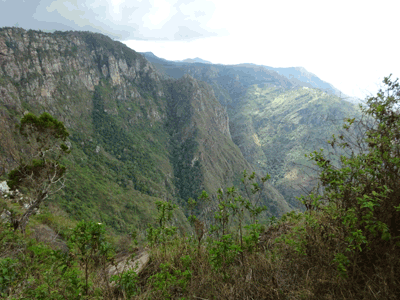
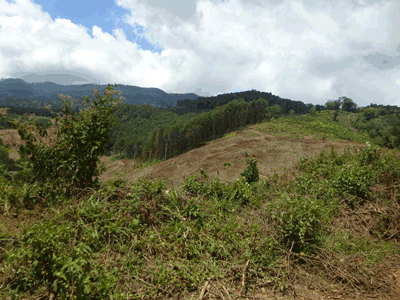
Dodoma, the administrative capital, is located in the centre of the country. Administrative districts are under construction, new ministries or official offices are being built every day.
Over time all offices will probably be in Dodoma, but many of them are still in Dar. Only a few embassies have agreed to settle in Dodoma, most of them prefer to stay by the sea.
So far the trips to Dodoma made us take the bus to Dumila, on the Morogoro-Dodoma axis, then catch a bus to the capital. But this time I tried the train, taking it at noon at the station of Kilosa and arriving an hour and a half later. It takes at least six hours by road, as the railway tracks up the Mkondoa valley, cutting through the mountains.
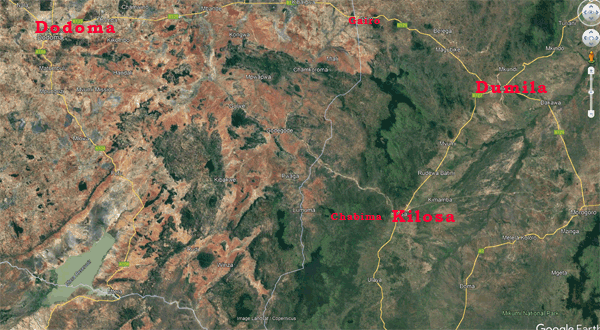
The railway track goes up the Mkondoa valley, to the northwest. The road goes north-northeast towards Dumila, joins the Morogoro-Dodoma axis at Dumila. Another bus climbs up to Dodoma, passing through Gairo.
So I arrived in Dodoma at 1:30 pm. As the friends I wanted to see were both absent I already had my ticket back for the next day.
From the station I took a collective bajaj (tricycle, called tuk-tuk in Asia) and went to the neighborhood where they sell vine plants. I was able to buy about fifteen of them and a few flowers, such as amaryllis or rose plants. I came back with fifteen vines, Regina variety, a variety of white grapes.
So I was done by the end of the afternoon.
I went to the market in the centre of the village to put up posters. This is the actual announcement and price list for each tree.
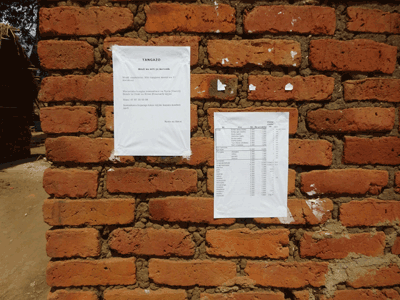
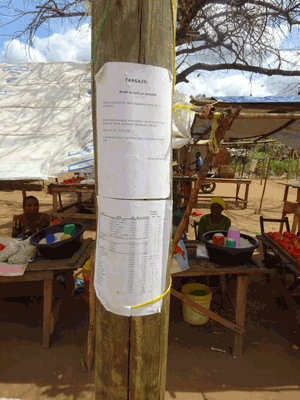
The glue used is flour mixed with a little water
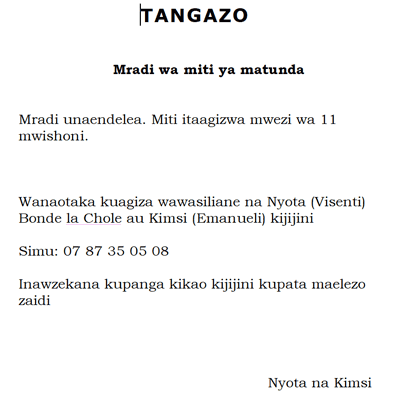
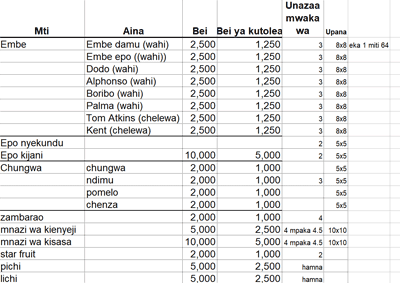
The first paragraph of the list is for mango varieties, embe. Only blood mango is requested. It is followed by apples, epo, from the English apple then citrus: chungwa orange and ndimu the little lemon.
One column gives the actual price, the other the price to pay. The following column indicates the number of years before bearing fruit, the following the optimal spacing.
I wanted plum plants, and see if I could get some peach varieties and pear. Kimsi and I had gone to Uyole, in the west, but we had no information on peaches and pears.
Le voyage aller a duré quatorze heures : de Kilosa à Morogoro, où l'on a pris un car pour Chalinze. De là un autre jusqu'à Mombo, au pied des Monts Usambara, puis un autre jusqu'à LushotoThe journey to Chalinze took 14 hours: from Kilosa to Morogoro, where a bus was taken to Chalinze. From there another one to Mombo, at the foot of the Usambara Mountains, then another one to Lushoto. On the way back we had a direct bus from Lushoto to Dumila, that bus which goes up to Dodoma. Then another one to take us back to Kilosa: ten hours of travel only.
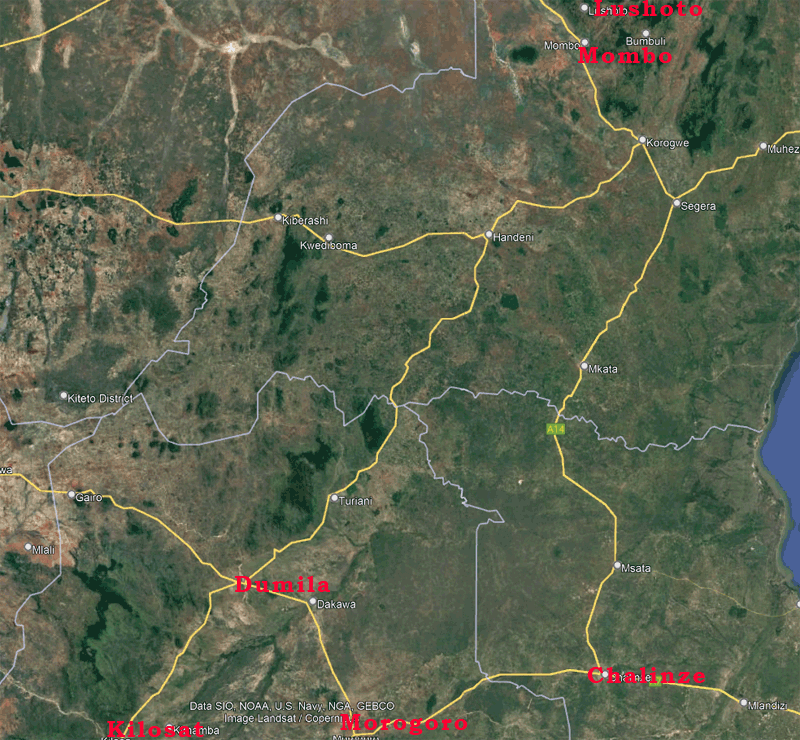
The direct road from Dumila to Korogwe, at the foot of the
Usambara, is not paved and has few services. There may be buses but
leaving probably early in the morning. It passes by Triani and Handeni.
Having arrived at eleven o'clock in Dumila, we made the detour by
Chalinze. The Lushoto-Dodoma route passes through Chalinze and Morogoro
to have more passengers coming down along the way.
Most of Tanzania was formed in the Precambrian, forming what is called the African shield or craton, two and a half billion years ago. Two million years ago, faults and a general rise in the shield occurred, resulting in the formation of mountains, causing significant metamorphism. The highest point is 2,200 metres, with Lushoto at 1,862 metres. The climate is cool and much of the mountain area is covered by rain forest. The Germans settled there for many years, until 1918, as can be seen from a few remains.
The Usambaaa mountains are quite touristic, known for hikes of one or more days.
The Muslim religion is largely predominant but there are an impressive number of churches of all kinds in Lushoto. Many places are dedicated to ancestral worship.


The west side is steep and steep, while the east side descends
gently towards the sea.
At the bottom right is the protected forest. In the centre of the photo
is a pine plantation. Various conifer species have been planted to
reforest the mountains.
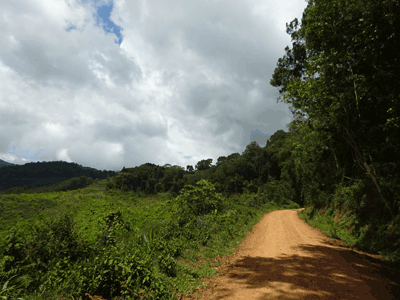
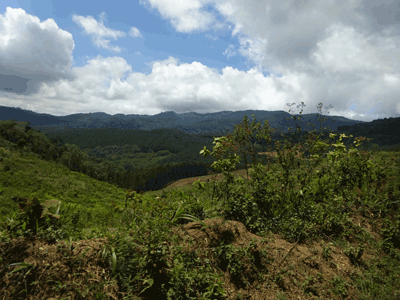
There are fields, of course, but also many areas that have been abandoned or left uncultivated due to the intense erosion once natural forests have been destroyed.
Eucalyptus and conifers are the species of reforestation, mainly.
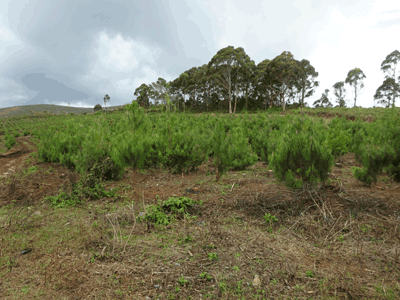
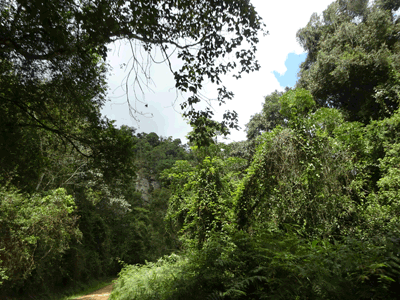
A nursery of pines, and at the bottom of eucalyptus. To the right the forest bordering the road.
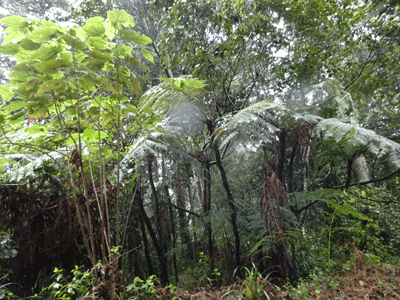
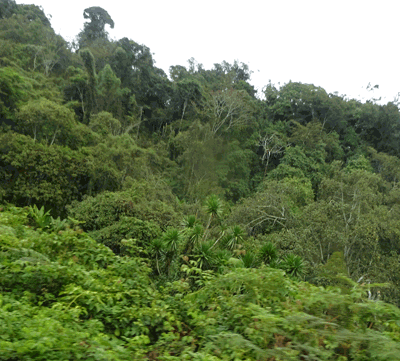
Tree ferns, pandanus (centre in the right photo), vines and drapery show that this forest is not a primary forest but secondary.
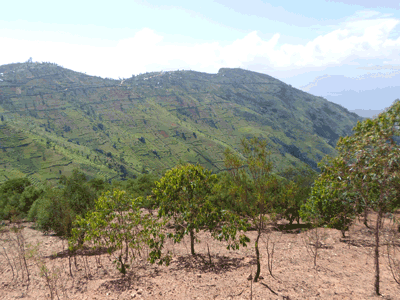
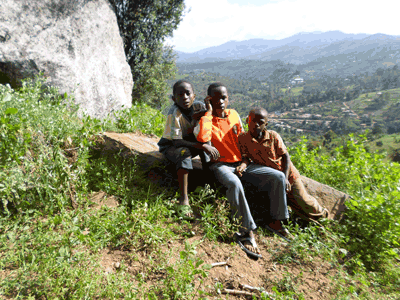
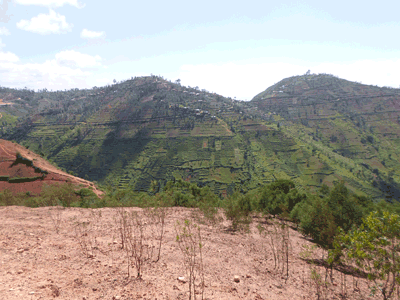
These photos were taken in October 2015, in Masanga, in the heart of the mountains. You can see terraced crops and fruit trees.
Once we bought our plants we decided to make a small excursion, towards the Stone of God. It is a place known for its strength, where we practice ceremonies or where we go to pray, to meditate. Next to it is a cave that a healer has annexed, but according to the guide I had about ten years ago, he had no right to it, nature belonging to everyone.
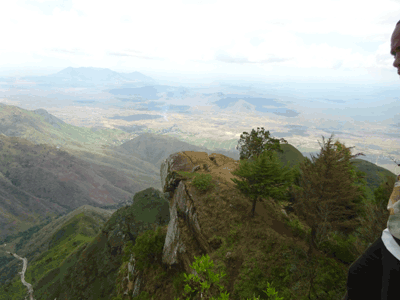
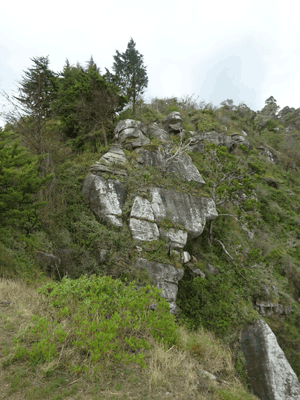
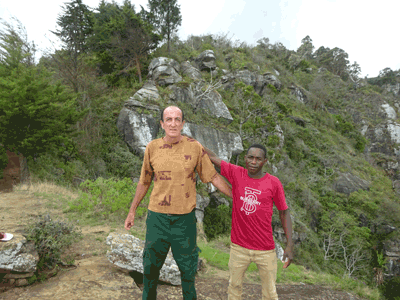
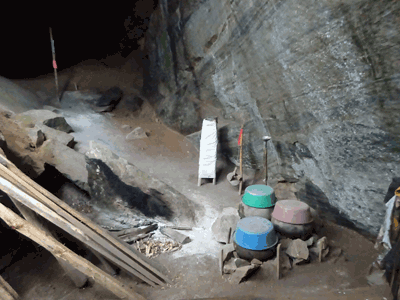
The stone overlooks the cliff. It is dominated by a set of
granite blocks that vaguely evokes a man.
The strongest point in the cave is located near the stick, at the bottom
left.
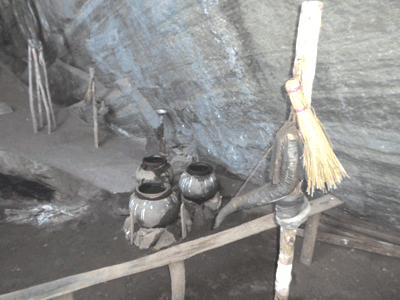
The cave in 2015.
There are several nurseries, of course. We found this one while chatting with a man who was having breakfast in the same cafe as me. In fact we were able to find plum, pear and peach trees, each one at a third of the price of Morogoro. We have seven of each.
Later I found flowers like carnations of poets, lilies, irises, amaryllis and lily canas.
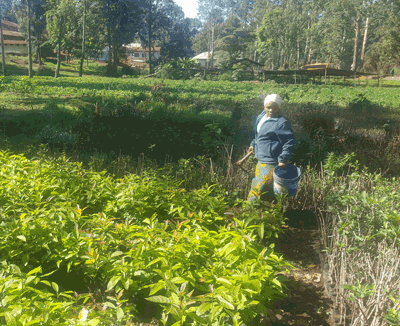
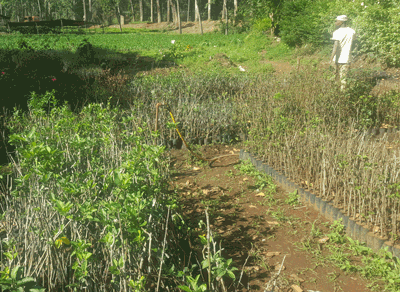
The garden now grows peppers and African eggplants, called bitter tomatoes in Swahili. I have some melon promises, but it’s the end of tomatoes.
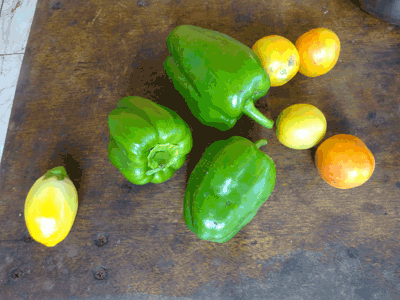
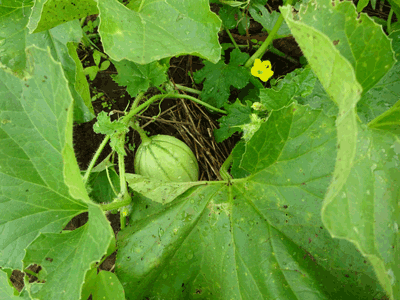
We harvested our first barbatine, which had turned yellow and was slightly soft on the flank. Inside a few seeds, little like those of passion fruit. On the other hand the flesh, which is the shell, is edible. The taste did not seem so good, I made an ice cream by adding a little cinnamon and vanilla.
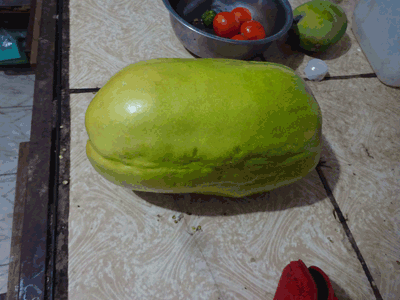
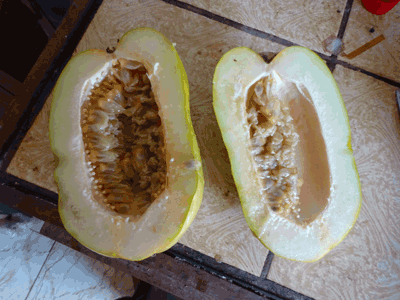
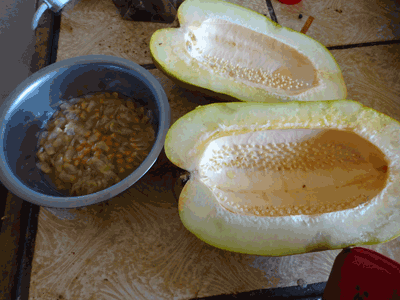
We had some rains in October and November. As usual, the rains stop and will resume at the end of November or early December. Half of the farmers have already planted their maize and it is starting to grow. The trees are back with small leaves.
